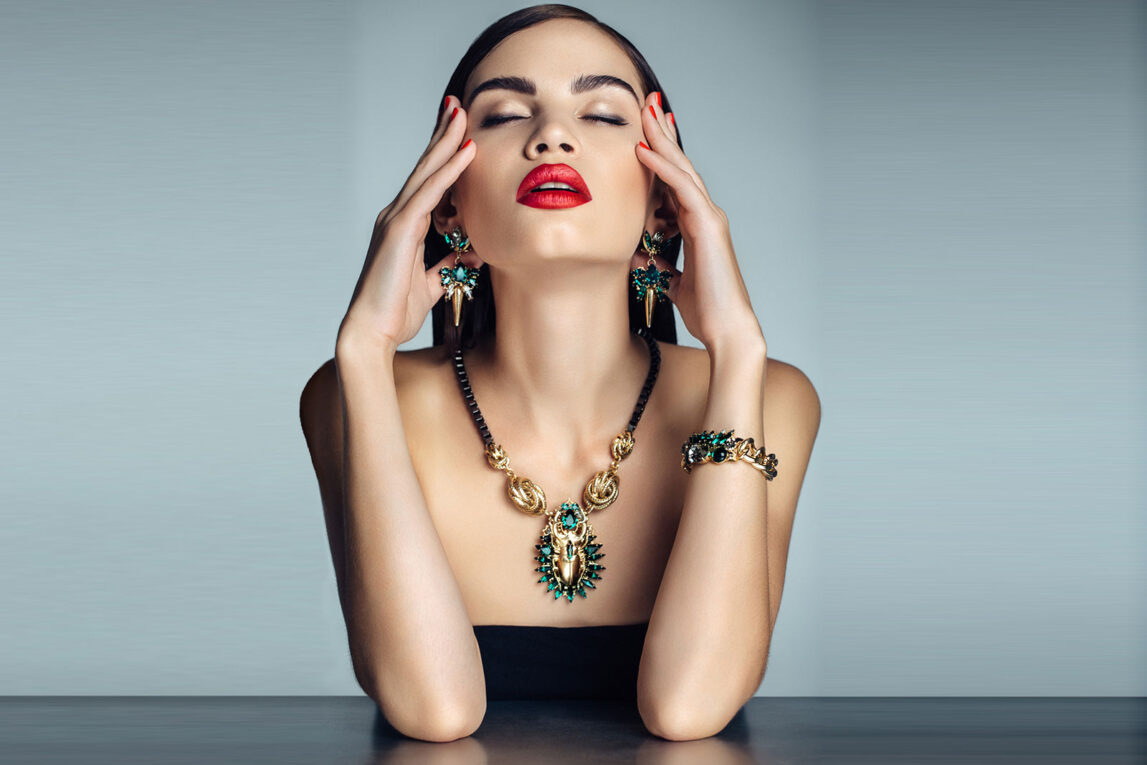Origins of the Industry
The costume jewelry industry in the United States began in the early 20th century as a more affordable alternative to precious gemstones and metals. Prior to World War I, most jewelry was either authentic precious metals and gemstones or homemade items. However, economic and social changes after the war led to the rise of a new middle class with more disposable income and desire for luxury goods. Novelty jewelry companies like Trifari, Hobe, and Coro started mass-producing imitation jewelry made of base metals and synthetic stones. These early costume pieces were inexpensive yet elaborate reproductions of high-end designs. The rising popularity of costume jewelry in the 1920s helped spark a creative and competitive new industry.
Innovation and Mass Production
As the industry grew, new manufacturing techniques allowed for even more rapid and affordable production. In the 1930s and 1940s, processes like electroplating, metal stamping, molding, and casting were developed to efficiently produce jewelry pieces on a larger scale. Synthetic materials also advanced, with plastics replacing earlier glass stones. This enabled U.S. Costume Jewelry designs to be mass-marketed to a broader consumer base beyond the elite. Companies heavily promoted their collections through department store catalogs, boosting sales. By the post-war period of the 1950s, costume jewelry had truly gone mainstream as an accessible luxury worn by all socioeconomic classes on a daily basis. Signature styles could now be produced for just pennies apiece.
Peak Popularity and Intricate Designs
The decades of the 1950s through 1970s marked the industry’s golden age, with almost all American women owning and regularly wearing costume jewelry pieces. Styles reflected the glamour and opulence of Hollywood movies and high fashion runways. Complex clip-on earrings, wrist corsages, bracelets studded with foil-backed plastic flowers and gemstones, brooches shaped like fruit or animals were intricately designed and elaborately decorated. Peacock feathers, gems, beading, silk flowers, and other eclectic embellishments were commonly used. Jewelry matched the trends of each season from space-age atomic to retro Victorian motifs. Famous jewelry houses like Trifari, Hobe, Coro, and Chamilia turned out dazzling pieces consumers coveted. Costume jewelry allowed middle Americans to feel connected to celebrity culture through affordable reproduction of designer looks.
Changing Times and Decline
However, trends began shifting in the 1970s as the youth culture rebelled against traditions. Minimalist and natural styles grew in popularity over ornate costume pieces. Meanwhile, rising production costs and overseas competition challenged American manufacturers. Synthetic stones were replaced with real gemstones as the gap between fine and costume jewelry blurred. The iconic American houses like Trifari and Coro that defined the mid-century industry either went bankrupt or were acquired. By the 1990s, mass-produced costume jewelry lost favor among mainstream consumers who preferred distinctive designer brands or vintage reused pieces. While the heyday has passed, interest in nostalgia and retro styles has helped sustain a niche market for vintage costume jewelry collecting and reproduction lines today.
Impact and Legacy
Over the past century, costume jewelry introduced accessible luxury and creative self-expression to American women across all classes and cultures. These affordably elaborate pieces allowed everyday consumers to partake in ever-changing fashion trends otherwise out of reach. Major jewelry houses churned out millions of gorgeous designs that captured the spirit of their eras. Costume jewelry manufacturing also employed many talented artisans and designers. Moreover, its popularity revealed how clothing and adornment have long been powerful cultural signifiers of identity, mood, and occasion. Though trends evolved, costume jewelry remains a symbol of 20th-century ingenuity, affordability, and passion for beauty that endures in nostalgia. As tastes changed, it opened the door for today’s self-purchasing consumer to explore personal style through vintage pieces or independent designers.
*Note:
1. Source: Coherent Market Insights, Public sources, Desk research
2. We have leveraged AI tools to mine information and compile it

